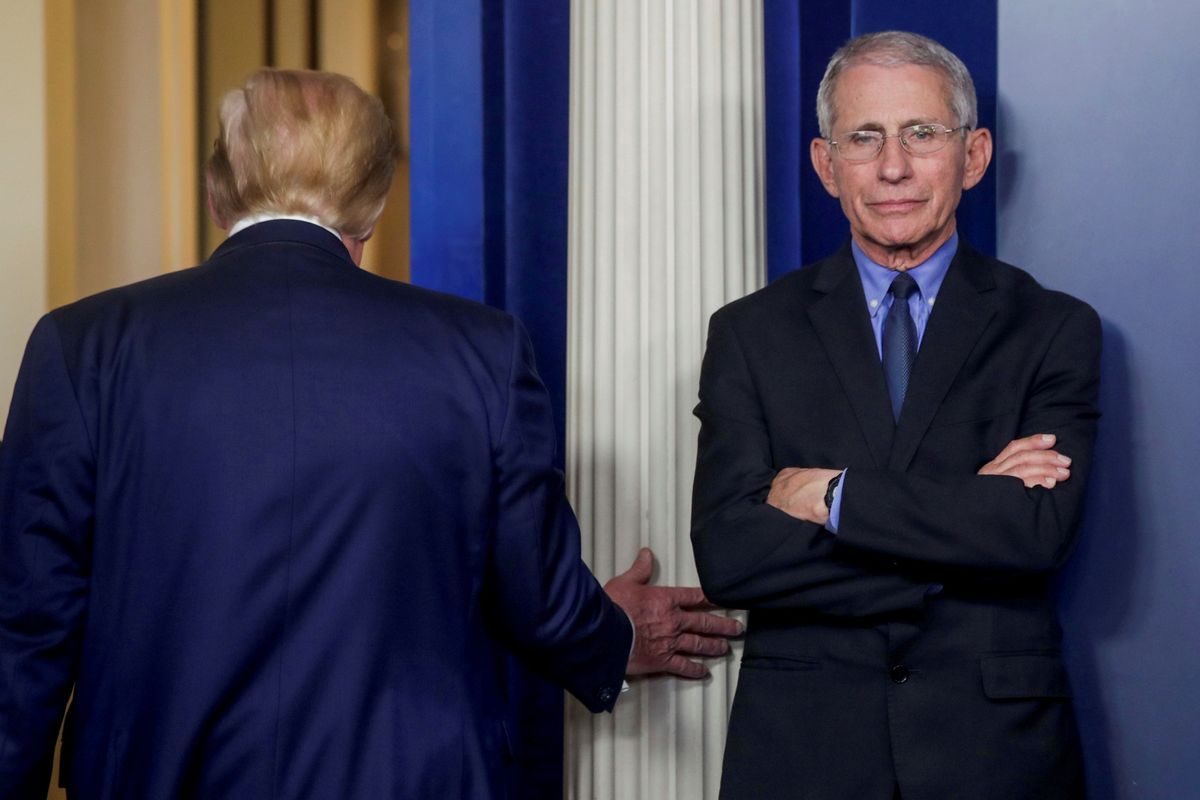500,000 US COVID-19 deaths is far higher than previously predicted. What were the initial projections?

A few minutes every morning is all you need.
Stay up to date on the world's Headlines and Human Stories. It's fun, it's factual, it's fluff-free.
As the virus began to be introduced to the US in February and March of last year, initial estimates were low.
On Monday, the United States crossed yet another somber milestone in the pandemic, marking 500,000 deaths since the coronavirus pandemic began a year ago.
In response to the grim marker, President Joe Biden and Vice President Kamala Harris held a candle lighting ceremony at the White House. Biden also ordered all flags to be flown at half-staff as a sign of respect for the half million Americans who have died from the virus.
“As a nation, we can’t accept such a cruel fate,” said Biden in his remarks before the ceremony. “While we’ve been fighting this pandemic for so long, we have to resist becoming numb to the sorrow. We have to resist viewing each life as a statistic, or a blur, or on the news. We must do so to honor the dead.”
Scientific predictions
This milestone offers the chance to look back toward the beginning of the pandemic at what experts first estimated the death toll would be.
As the virus began to be introduced to the US in February and March of last year, initial estimates were low.
Last March, Dr. Anthony Fauci, a member of the White House coronavirus task force, estimated that there would be between 100,000 and 200,000 deaths from the virus. This number was reinforced by Dr. Deborah Birx, the White House coronavirus response coordinator, who also estimated between 100,000 and 200,000 deaths, “if we do things almost perfectly.”
There were some significantly higher estimates too. A team of British public health researchers estimated in a March 2020 report that the US could see up to 2.2 million deaths if no restrictions – such as quarantines and social distancing – were put in place. The team, headed by public health researcher Neil Ferguson, also estimated that if safety restrictions were adopted, it would only cut the death toll in half, to 1.1 million.
Dr. Fauci indicated his skepticism of these estimates though, saying that the models used to make them don’t accurately portray reality.
“Whenever the models come in, they give a worst-case scenario and a best-case scenario,” he said on CNN’s State of the Union in March 2020. “I’ve never seen a model of the diseases that I’ve dealt with where the worst case actually came out.
Later in the year, the US experienced its widely predicted second wave, but most experts expressed their belief that predicting the width and breadth of the second wave could be a hopeless endeavor.
In June, Dr. Fauci said that the occurrence of a second wave was possible, but not inevitable.
“It is not inevitable that you will have a so-called ‘second wave’ in the fall,” Fauci told CNN. “However, when you start to see increases in hospitalization, that’s a surefire situation that you’ve got to pay close attention to.”
“My feeling is that there is a wave coming,” said public health researcher Eili Klein of Johns Hopkins University School of Medicine, adding, “it’s not so much whether it’s coming, but how big is it going to be.”
One model, published in early September by the University of Washington’s Institute for Health Metrics and Evaluation (IHME), predicted that there would be 410,000 coronavirus deaths in the US before the end of the year. The model predicted a best-case scenario as seeing only 288,000 deaths by January 1.
Predictions from politicians
Another group that had a major voice in the prediction of the virus were politicians, many of them entrenched in the 2020 presidential campaign.
Former President Donald Trump was notorious for predicting that the virus would go away quickly. He first made the claim during a February 2020 press conference and repeated it well through October, even after contracting the virus and being hospitalized himself. Trump defended his comments in a July interview, saying, “I will be right eventually.”
President Biden, who at the time was on the virtual campaign trail, criticized the response by the Trump administration, arguing that things would get worse if they weren’t handled by health professionals. Biden also expressed his concerns early, in January 2020, weeks before Trump expressed concern about the virus.
Another politician who was on the campaign trail as cases came to the US was Senator Bernie Sanders, who predicted in March that the deaths from the coronavirus would exceed the death toll of US armed services in the second world war.
New York Governor Andrew Cuomo offered a rather grave look at the path for the virus as New York was gripped by it in the early months of the pandemic.
“We underestimated this virus,” he said in April. “It’s more powerful. It’s more dangerous than we expected.” Cuomo also publicly predicted that thousands of New Yorkers would die of the virus, a claim that proved to be true in the end.
Current predictions
The current IHME model predicts that around 590,000 Americans will have died by the end of May, by which point they predict deaths will drop to around 500 a day (compared to around 2,000 per day now).
Dr. Fauci, who is now the Chief Medical Advisor for President Biden, said that it’s possible that Americans could be wearing masks as far out as 2022, but the statement has been met with some resistance from others in the scientific community.
President Biden has committed to getting 100 million Americans vaccinated within his first 100 days, a goal his administration is set to achieve with more than 64 million Americans vaccinated within only his first month in office.
Have a tip or story? Get in touch with our reporters at tips@themilsource.com




Comments ()